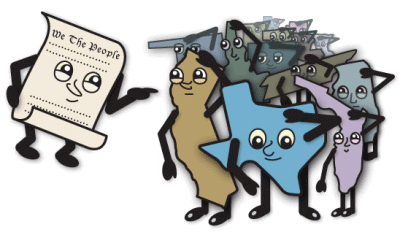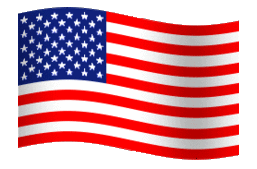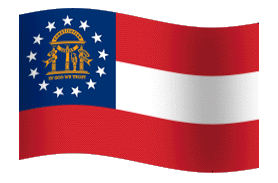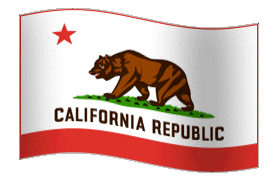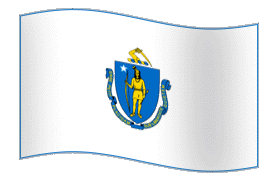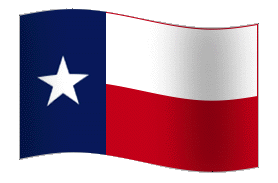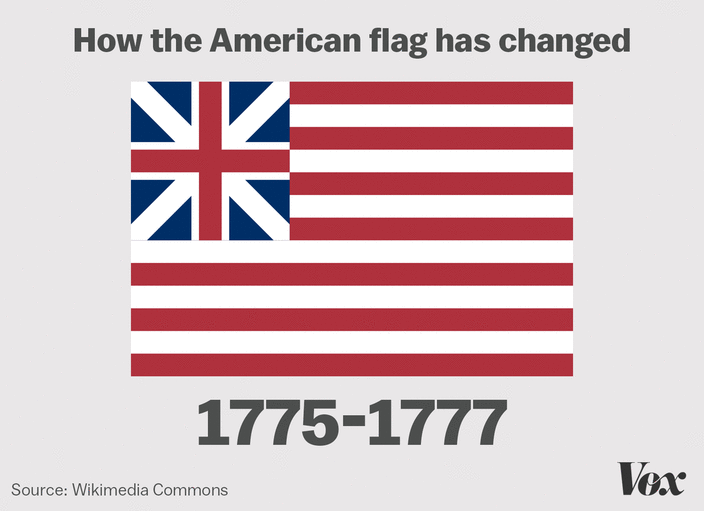
Mr. Dostert's Domain


What is Government?
Government is the system which organizes, protects, and utilizes resources for a society. Early on in human history societies needed to find effective ways to organize society and government was born. There are several theories as to what caused governments to form, however every government must work collectively to organize society in a way that reflects the people's principles and improves the quality of life for the whole. The government there sets up public policies which are simply what a government decides to do. These things cover a broad spectrum ranging from taxation to defense and many other areas such as education, crime, and healthcare.
Every government must exercise three types of power: legislative power-the power to make laws, executive power- the power to enforce and administer laws, and judicial power- the power to interpret laws and settle disputes that may arise within society.

The State
The state has emerged as the major political unit in the world. A state can be defined as a body of people, living in a defined territory, organized politically (by a government), with the power to make and enforce laws without the consent of any higher authority. Today there are nearly 200 independent states in the world which vary in size, power, resources, and economic importance. Still each contain the four characteristics of population, territory, sovereignty, and government.
The Origins of the State
No one knows for certain the origins of the state, however four competing theories have developed to explain what caused states to come into existence.
The Force Theory
Many scholars have come to accept the force theory which claims that the first states were born through force. According to this theory a person or some group used the threat of violence to impose his/their will upon the people who submitted to this threat. When their rule was established the basic elements of the state were present.

The Evolutionary Theory
Other scholars have claimed that the state naturally developed out of the early family structure. The primitive family in which one person became the head and thus the "government," was the first stage of development. As families grew into clans and later tribes leadership followed the initial design. When societies became settled into one territory through the development of agriculture the state was born.

The Divine Right Theory
Another theory holds that God created the state and chosen personally the leaders to rule the state to become the kings and queens. God had therefore given these people his divine blessing to rule, and the people were therefore bound to obey the leader as they would God; opposition was therefore both treason and a mortal sin.
The Social Contract Theory


The final theory known as the social contract theory. The social contract theory holds that early people lived in complete freedom but perpetual fear because there was no authority to protect them from each other. This meant that individuals were only as safe as their physical strength and intelligence could make them. Humans overcame this by creating a state in which they agreed to give up as much power to the state as necessary to promote the safety and well-being of all.


The social contract theory argues that the state arose out of a voluntary act of free people. It holds that the state exists to serve the will of the people and they are the sole source of political power. Therefore if the government abuses its power the people have the right to withhold that power whenever necessary. This theory was vital to the creation of the United States whose revolution was based on the principle that King George III of England had violated that contract which justified revolution.
Foundations of American Government
The Purposes of Government
The role of the government varries greatly from one country to another, but within the United States the answer to that question can be found in the Preamble of the Constitution:



Form a More Perfect Union

Establish Justice
The second purpose of government in the United States is to Establish Justice. Justice itself is vague and often means something different to anyone who demands it. In the United States justice has come to mean that the law, in its content and administration must be reasonable, fair, and impartial. Although this standard has not always been kept, the history of the United States has largely been shaped by our continuing attempts to reach this goal. Our nation establishes justice through the creation of courts and the fair execution of law.

Insure Domestic Tranquility
All societies need order, and maintaining the peace at home is an essential function of government. This is done in many ways, but ultimately it is done whenever the government enforces the law. This is seen on the large scale from the creation of police departments and prisons all the way down to the placement of streetlights. Without the government to fill this obligation people would live in a state of anarchy- without government, law, or order.

Provide for the Common Defense

Promote the General Welfare
Its hard to imagine how much the United States government does for its citizens. Promote the General Welfare translates as do what is best for the most people. This can be seen in the construction of schools and hospitals as well as protecting the air quality or water quality through the creation of oversight agencies to monitor these. The list of tasks the government performs for your benefit goes on and on.

Secure the Blessings of Liberty



The United States was founded on principles of liberty and freedom and it is the government's responsibility to uphold these principles in its administration. Although liberty is not absolute, every American citizen should recognize their obligation to protect our rights and liberties. This can be seen in the feelings of patriotism that arise in most Americans to protect the nation and the principles of America as the characteristics of a good citizen. As Thomas Jefferson said, "eternal vigilance is the price of liberty."




The United States from its conception was the combination of different colonies formed with different principles stretching from Massachusettes to Georgia. One primary job for the national government is to overcome the rivalries and jealousies of the states among the states in order for the entire country to work together for the best interests of the nation. The Constituion was built on the belief that in union there is strength and therefore the government works to maintain that union by settling disputes, creating a common currency, as well as forcing states to recognize the legitimacy and authority of other states.

Defending the nation from foreign enemies is a necessity for all states and has always been a major responsibility for the government. The armed forces and foreign policies ultimately are designed for the common purpose of maintaining the security of the United States. We can see the government fulfilling this purpose with every man and women in the armed forces, in intelligence agencies such as the C.I.A., as well as in the State Department which helps maintain friendly relationships with other nations and implements foreign policy.






Forms of Government
No two governments are, or ever have been exactly alike because governments are the product of the needs and experiences of the society which creates them. Over time political scientists have classified governments based on three features:



-
Who can participate in the governing process?
-
The geographic distribution of power.
-
The relationship between the legislative and executive branches.

Who Can Participate
Democracy
To many the most important classification when looking at different governments is the number of participants within the government. They can range widely depending on the government, but we will focus on two primary types: democracy and dictatorship.

In a democracy, political authority rests with the people, and therefore government exists only with the consent of the people. There are two basic forms a democracy can take: direct and indirect. In a direct democracy the will of the people is translated into public policy directly through mass meetings where citizens vote.
Direct democracies can only work on a small scale where governmental problems are few and relatively small. There are no true direct democracies at the national level in the world today.
Indirect democracies are also referred to as representative democracies or republics. This type of democracy is more familiar to Americans. In an indirect democracy the people vote for a small group of people to represent them and act as their representatives to express their will. This small group run the government but are held accountable for their conduct through periodic elections.

Dictatorship
A dictatorship is a government where the the government can not be held responsible to the will of the people. Dictatorships come in two forms: autocracies and oligarchies. An autocracy is a single person holds unlimited political power. An oligarchy on the other hand is is a government in which the power of the country is held by a few, self-appointed elite.
Geographic Distribution of Power

Dictatorships often project the appearance of control by the people and even stage elections. However these elections are closely monitored and controlled by the ruling party and the ballots often only have one candidate or candidates from the ruling party. Dictatorships are often militaristic because they often gain power through force and they continue to use the military to project strength to prevent uprisings and show unity under the dictatorship's leadership. Dictatorships often turn to foreign aggression to enhance the country's military power and prestige.
In every government the power to govern is located in one or more places geographically. From this standpoint, three basic forms of government exist: unitary, federal, and confederate governments.
Unitary Government
Federal Government
Relationship Between Legislative & Executive Branches
Confederate Government




A unitary government can be described as a centralized government. All power is held in a single centralized agency. The central government creates local governments for its own convenience and those governments can only exercise powers the central government allows them to exercise. Local governments could theoretically be done away with at the will of the central government because they exist exclusively through their will. Today most governments have a unitary government.
A federal government is a government in which powers are shared by a central government and regional governments. In order for this to work an authority superior to both the central and regional authorities must exist so that neither authority oversteps its limits. This authority usually comes in the form of a written constitution. Both the central government and the regional governments act directly on the people through their own set of laws, agencies, and officials. The United States is an example of a federal government because it has a central government in Washington D.C. and 50 state governments who opperate in conjunction with the national government.
A confederation is an alliance between independent states. In a confederate government the central authority handles only matters that the states assign it. Usually these are limited to things such as defense and trade. The confederate structure allows members to cooperate in matters of common concern and still maintain their own seperate identities. Confederations are rare in the modern world, the European Union is the closest approach to one today. In our history the United States under the Articles of Confederation and the Confederate States of America are also examples of this government.



Presidential Government
Parliamentary Government
The relationship between the legislative and executive branches also plays a large role in the type of government that will result. There are two typical forms this relationship can take: presidential or parliamentary.
In a presidential government the legislative and executive branches are separate, independent of one another, and coequal. Often each have powers to block the other branch.
In a parliamentary government the executive (prime minister) is the leader of the legislative branch and therefore subject to its control.





Concepts of Democracy
Democracy is not something that is easy or simple. In fact, in practice democracy is one of the most complex and messy governments there is. There have been shouting matches, smear campaigns, and even fist fights on the Senate floor. In order for democracy to function the people within the nation must work together, compromise, and cooperate or the system breaks down. The American form of democracy rests on five basic notions.

Worth of the Individual
Democracy is dependent on the belief that all citizens, no matter their situation, is a separate and distinct being. Furthermore each person has value, and their opinions and belief are just as valuable as everyone else. Whenever a democratic government acts it must remember that the nation is made up of individuals whom are a valued resource and it should not act in ways which harm them.
Equality of All Persons
The democratic concept of equality says that people are all entitled to equality of opportunity and equality before the law. The concept holds that each person must be free to himself or herself as fully as he or she can, and that each person should be treated equally by the law. This does not mean that people should have equal wealth or circumstance, only that the government should treat them the same.
Majority Rule, Minority Rights
In a democracy the public will is determined through voting with the majority opinion to be transformed into public policy. It argues that what most people want will be right more often than it is wrong. However, majority rule can not be used to deprive the rights of the minority and the minority must always be allowed to express their opinions freely because the minority can eventually become the majority.
Necessity of Compromise
For democracy to work there is a required give-and-take that must be made by policy makers. This means that leaders must always be willing to make concessions and compromise to find some common ground to prevent political deadlock. By blending views government can create policies that a majority can support and build a government that more accurately reflects its people.
Individual Freedom
Democracy requires individuals to have freedom to do what he/she wants as long as that action does not interfere with the freedom of others. That does not mean that freedom is absolute. There must be a balance between individual freedom and the rights of society as a whole.






Democracy & Free Enterprise

Because the American system of government is committed to liberty, it has deep-rooted connections to the American economic system, commonly referred to as free enterprise. This system allows individuals to privately own capital goods and with as little government interference as possible. We will look at this further when we take economics class.

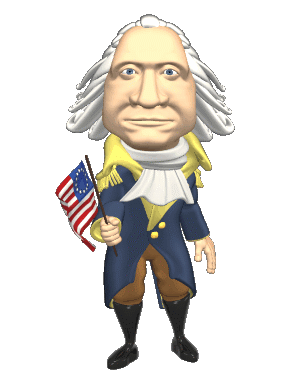
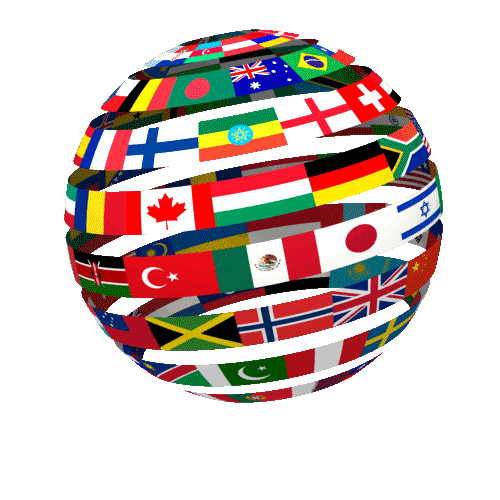




The Preamble


The Preamble was placed in the Constitution more or less as an afterthought. It was not proposed or discussed on the floor of the Constitutional Convention. Rather, Govenor Morris, a delegate from Pennsylvania who as a member of the Committee of Style actually drafted the near-final text of the Constitution, composed it at the last moment. It was Morris who gave the considered purposes of the Constitution coherent shape, and the Preamble was the capstone of his expository gift. The Preamble did not, in itself, have any substantive legal meaning. The understanding at the time was that preambles are merely declaratory and are not to be read as granting or limiting power.
The very opening words of the Constitution mark a radical departure: "We the People of the United States." That language was at striking variance with the norm, for in earlier documents, including the 1778 treaty of alliance with France, the Articles of Confederation, and the 1783 Treaty of Paris recognizing American independence, the word "People" was not used, and the phrase "the United States" was followed immediately by a listing of the states.
The Preamble as a whole, then, declares that the Constitution is designed to secure precisely the rights proclaimed in the Declaration. The Constitution was therefore not the negation of the Revolution; it was the Revolution's fulfillment.

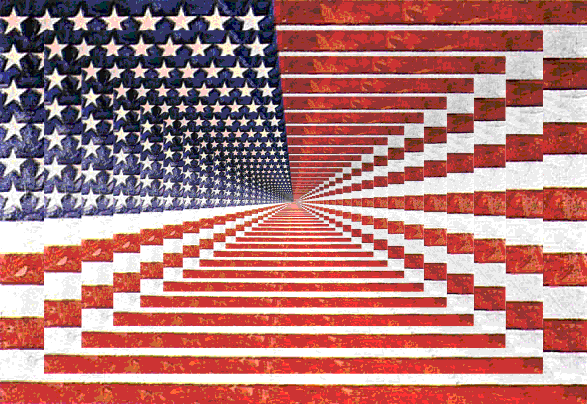


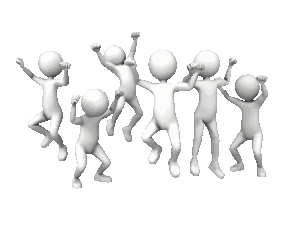


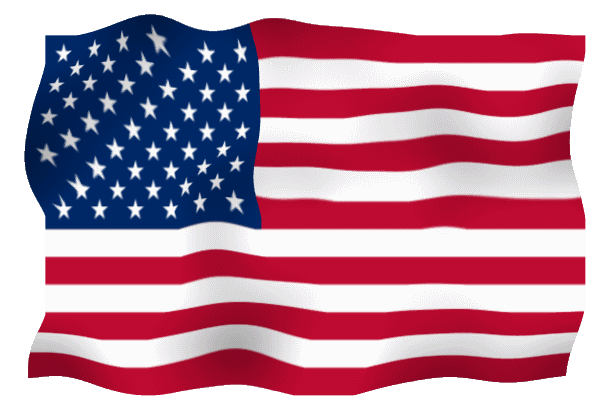





The American Constitution
The Constitution of the United States is the nation's fundamental law and has become the blueprint for aspiring democracies throughout the world. When the framers put it together, few could have guessed how important the document would become or the place it would assume in American heritage. Without a doubt, the Constitution is the most influential document of the United States and the new form of government constructed over 200 years ago continues to survive to this day.

Creating the Constitution
During the summer of 1787 55 delegates from 12 states met to amend the Articles of Confederation, but instead quickly chose to write a new Constitution for the young nation. The primary architect of the Constitution was a Virginian named James Madison. His Virginia Plan called for three separate branches with congressional representation based on population (which would benefit larger states such as Virginia). This upset smaller states such as Delaware who had small populations and felt that they would lose influence and would be at the mercy of the larger states. To counter the Virginia Plan the smaller states presented the New Jersey Plan. The New Jersey plan called for a congress with equal representation among the states. After long debate the Connecticut Compromise created a bi-cameral congress with one house's representation based on population, and the other house's representation equal among the states. With this settled the framers turned to the issue of slavery and how they would be counted. Once again the debate was fierce but the Three-Fifths Compromise determined that each slave would be worth 3/5 of a freed man giving the slave-holding states an advantage. Several more compromises were worked out including the Commerce and Slave Trade Compromise before it was sent to the states for ratification. After Federalists led by Alexander Hamilton and James Madison and Anti-Federalists led by Thomas Jefferson debated for over a year the new Constitution it was ratified and went into effect in 1789.

An Outline of the Constitution
The Constitution is a fairly brief document. It has about 7,000 words which have shaped the government of the United States for over 200 years through centuries of growth and change. It is easily organized into nine parts beginning with a brief introduction known as the Preamble, followed by seven Articles and later Amendments which have been made to the Constitution.

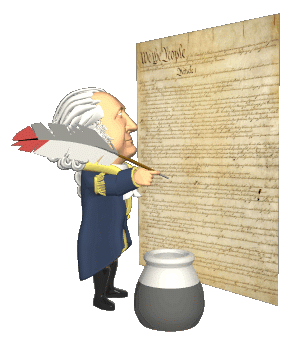

Constitutional Inspiration
The Framers of the Constitution did not invent many of the ideas that were incorporated into the American system of government. They were influenced by many different ideas and traditions, especially those from their British heritage. These ideas came together at the Constitutional Convention in 1787 to form the document that still governs the United States today. Without these inspirational documents however, our nation would be very different.

Enlightenment Philosophy
Perhaps the most important thing to remember about the Constitution is the era in which it was constructed- the Age of Enlightenment. During the Enlightenment, educated elites in Europe had began to question the prevailing norms of society and tried to use science and logic to create a better world. Many of these Enlightenment authors particularly questioned how to create a better government and reform it to serve the people better. Enlightenment thinkers tended to stress individualism and a society based on merit rather than position leading them toward republican governments which would allow the people to govern themselves.
A key concept that many Enlightenment philosophers struggled with was the nature of humanity and what this meant for government. Some writers such as Thomas Hobbes believed that people were naturally violent and selfish and therefore must be forced to obey government for the improvement of society. Hobbes supported a powerful government which would be able to use examples that would force the people to work toward the common good rather than indulge their selfish and violent nature. However, unlike the experts of his time, Hobbes felt that the authority of the government came from the people, not god. This meant that this subjugation was unconsciously voluntary, as people submitted to authority because it was in their best interest.
Another key influence on the Framers of the Constitution was John Locke who wrote that people had inalienable rights, chief among them land, liberty, and property. Furthermore, Locke argued that the primary role of the government therefore was to protect these rights and ensure that citizens were given opportunities to achieve success and be happy. Unlike Hobbes, Locke argued that human beings were driven by reason and tolerance and that the government should be designed in away that allowed citizens to express these drives and participate in governance.
The ideas of Jean Jacques Rousseau were some of the most influential for the framers when at the Constitutional Convention. Rousseau argued that the government was created by the people and existed and was created through a social contract. This agreement implied that when the state no longer served the interests of citizens, it was their right to remove that government. The social contract theory was vital to the creation of the United States whose founders argued that the King of England had violated their rights. This violation gave them the right to overthrow him and create a new government that would protect the rights of citizens. When creating the Constitution the framers incorporated this line of thinking to form a government that would be responsive to the will of the people and protect the rights of man.



Inspirational Documents
Not only did the framers use enlightenment philosophy to design the Constitution, they also borrowed from English legal documents which were part of their heritage that they wanted to include in their new nation.





The first document that was a major influence on the Constitution was the Magna Carta. The Magna Carta was an agreement between the Lords of England and King John in 1215 that required the king to follow the law like his subjects and ask for their consent to increase taxation. These ideas influenced the United States by introducing the concepts of Rule of Law and consent of the governed.
The second document which inspired the Constitution was the Mayflower Compact. It was written by the pilgrims who settled Plymouth Colony in 1620. It was very important to the founders because it established the concept that the roles of governments, like citizens, should be defined and described in a written document. The Constitution followed this model by clearly identifying what the government of the United States could and could not do, offering recourse in the event that the government overstepped its bounds.
The American Revolution was largely inspired by the English Bill of Rights (1689). When the king refused to give representation to the colonists in parliament they revolted, eventually leading to all out war with the king. When creating a new government, those same revolutionaries created their own American Bill of Rights which echoed the ideas found in its British counterpart. The English Bill of Rights inspired ideas such as a guaranteed elected body to give voice to the people, the freedom of speech, a prohibition on cruel and unusual punishment, and even the right to bear arms.
Another key influence on the framers of the constitution was the pamphlet Common Sense by Thomas Paine. Thomas Paine inspired the colonists during the darkest days of the American Revolution by saying that Americans are united people. A main aim of the Constitution was to form a more perfect union, and bring the states closer together. Over time the Constitution has united the nation and created a common sense of community amongst the states, just as Thomas Paine envisioned.
The Six Basic Principles
The Constitution is built around six priniciples which guided the framers: popular sovereignty, limited government, separation of powers, checks and balances, judicial review, and federalism. These principles support the structure of our government and are inherent in the language of the Constitution.


Popular Sovereignty

The Constitution begins with the three words, "We the People" signaling that all power of the government comes from the people. The principle of Popular Sovereignty holds that the government only governs with the consent of the governed. Therefore the government must always answer to the will of the people.

Limited Government
The principle of Limited Government holds that no government is all powerful and the government can only act in ways that the people have given their consent to do. Just like citizens, the government must also follow the laws and conduct itself within the framework set forth in the Constitution.


Separation of Powers
The Constitution creates three separate but equal branches of government to prevent any one from becoming too powerful. These branches are the legislative-to write laws, executive- to enforce laws, and judiciary- to interpret the law.


Checks and Balances
Although the government is separated into three distinct branches, they are not free to act as they will. The Constitution sets forth a system of Checks and Balances for different branches to oversee the others to make sure that they are not abusing the powers they have.

Judicial Review
Although Judicial Review is not written directly into the Constitution it seems clear that it was imlied, and it is essential to American democracy. Judicial Review is the power of the courts to determine whether a law or government action complies with the Constitution and strike down any act which is unconstitutional.



Federalism
The division of power between the national government and the states was both a necessity and another check upon the national government. Federalism allows the people of each state to have some level of authority yet still maintain the greater union of the United States.

These six principles have guided the government of the United States for the past 200 years and have become part of the American identity. These principles have created a balanced government responsive to the will of the people and kept in check from abuses of power.
The Amendment Process

The United States Constitution has been in the basis for American government for over 225 years, far longer than any other written constitution of any other country. This is largely due to the fact that the Constitution is a living document, that is, a document that is not permanent and is able to adapt to the changes of society and time through an amendment process. Therefore the document written throughout the hot summer of 1787 is, yet is not, the same document which currently directs our republic today. Wording has been added, deleted, and altered due to the direction the nation has taken throughout its history to adapt to the needs of the nation. This has come in two forms: the formal, and informal amendment.

The Formal Amendment Process

The framers of the Constitution knew that they would never be able to create a document that would be able to adapt to all the unforeseeable problems which would confront their new nation and therefore Article V of the Constitution sets forth the process to formally amend the Constitution. A formal amendment is a direct change to the words or wording of the Constitution, this has been done 27 times.
Amending the Constitution is a two part process: proposal and ratification. Article V sets forth two methods for proposal and two methods for ratification of Constitutional Amendments meaning that there are actually 4 methods possible to make a formal amendment. Below you can see a chart which shows the methods provided by Article V.


It is important to note that the amendment process incorporates federalism because it incorporates both the national government as well as the individual states. Furthermore the amendment process excludes the President and has become a check Congress holds on the President because he is unable to veto an amendment.

The 27 Amendments

The amendments to the Constitution have come at different times and for different reasons. The first ten, known collectively as the Bill of Rights, were proposed by the first congress and ratifed within three years of the adoption of the Constitution to guarantee liberties to the people. Later amendments have come to solve national crises as well as to expand freedom and make the nation more democratic. Some of these include the abolition of slavery (13), the expansion of voting rights (15, 19, 23, 26).


Informal Amendments



The Constitution is a relatively brief document for its importance as the framework for American government and most of its sections are brief, even skeletal in nature. Because of this vagueness leaders have had freedom to adapt the Constitution in ways which were beneficial to governance. For this reason the Constitution has been informally amended many times; that is it has been changed without directly changing the words of the document.

There are five basic methods that have changed the understanding of the Constitution without directly changing the language and therefore have created informal amendments:
-
Passage of Basic Legislation by Congress
-
Actions Taken by the President
-
Decisions of the Supreme Court
-
Activities of Political Parties
-
Customs



Each method listed above has changed the way American government has exercised authority within the limits of the Constitution. The most striking informal amendment comes from the custom of the President's Cabinet. Each President chooses an advisory council to head up the many departments he or she is responsible for and have done so since George Washington created the first Cabinet in 1789. However the Constitution never mentioned the creation of this council directly until 1967, yet it has become an intigral part of our government and essential to our democracy.










Failed Amendments


Throughout the history of the Constitution 27 changes have been made through the amendment process. Amendments are not easy to pass, and several amendments have been proposed over time, but failed to pass the second hurdle- ratification by the states. Below are a list of the six amendments which were passed by Congress but have failed to become part of the Constitution.
Federalism
Federalism became a principle of our government both as a necessity, as well as another check on the power of the national government which the Framers of the Constitution feared. The federal system of the United States divides power between the National Government in Washington D.C. and the States. In this way, federalism ensures that the National Government is strong enough to meet the nation's needs yet preserves the uniqueness of the individual states creating a system which requires cooperation.

The Division of Power

The Constitution provides for a division of power (different from separation of power) between the National Government and the States. That is it assigns certain powers to the National Government and certain powers to the States. This division of power was implied in the original Constitution and later spelled out in the Tenth Amendment in the Bill of Rights. In effect this produces a dual system of government opperating together and separately over the same people and the same territory at the same time.

The Federal System and Local Governments


The American system of government creates three levels of government: The national (or federal) government headed by the President in Washington D.C., the State Government headed by a Governor, and a Local Government which could be a City, Township, Village, etc. It is important to note that the Constitution provides for the Federal and State Governments and thereby legitimizes their existance. In essence this means that the National Government cannot disolve or interfere in a State's affairs outside of the power's given to it by the Constitution. Therefore the Constitution creates States' Rights. The same cannot be said for Local Governments. Local Governments exist at each state's discression and are reliant upon the state for the authority. In short, when the local governments exercise their powers, they are actually exercising State Powers.
The Supremacy Clause
Because there are two levels of government operating over the same territory conflicts are bound to happen between national law and State law. The framers anticipated these conflicts and therefore included what has become known as the Supremacy Clause into the Constitution. The Supremacy Clause declares that the Constitution and the laws and treaties of the United States are "the supreme Law of the Land." This means that the Constitution stands above all other forms of law in the United States and the states and territories must act within its boundaries.

Click for larger size
Click for larger size
Interstate Relations
One aspect of Federalism that is often forgotten is the relationships among the fifty States of the United States. The Constitution deals directly with those relationships as well. First, no state can enter into a treaty, alliance, or confederation with any foreign power, however they can enter into interstate compacts- agreements among themselves and with foreign states. Furthermore, the Full Faith and Credit Clause of the Constitution says that each state must recognize and respect the validity of the laws (civil not criminal), decisions of the courts, and documentation of other states and accept them. Finally the Privileges and Immunites Clause prevents States from drawing unreasonable distinctions between its own residents and those from other states. It must allow all American citizens no matter their state of origin to travel in or become a resident of that State. It must also allow any citizen to use its courts and make contracts within its borders.

